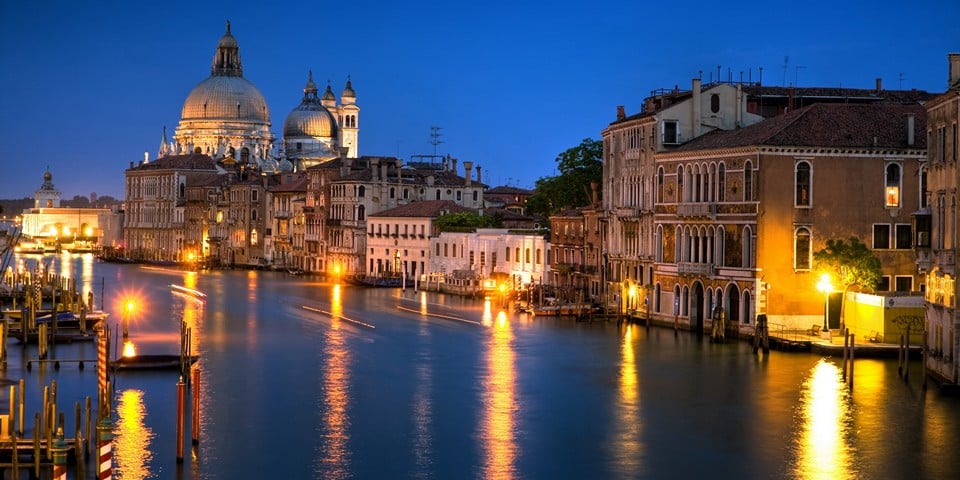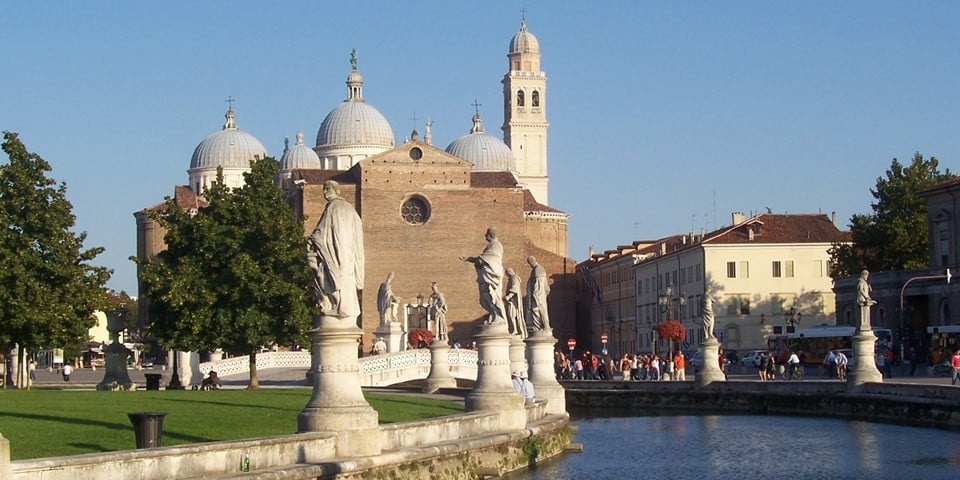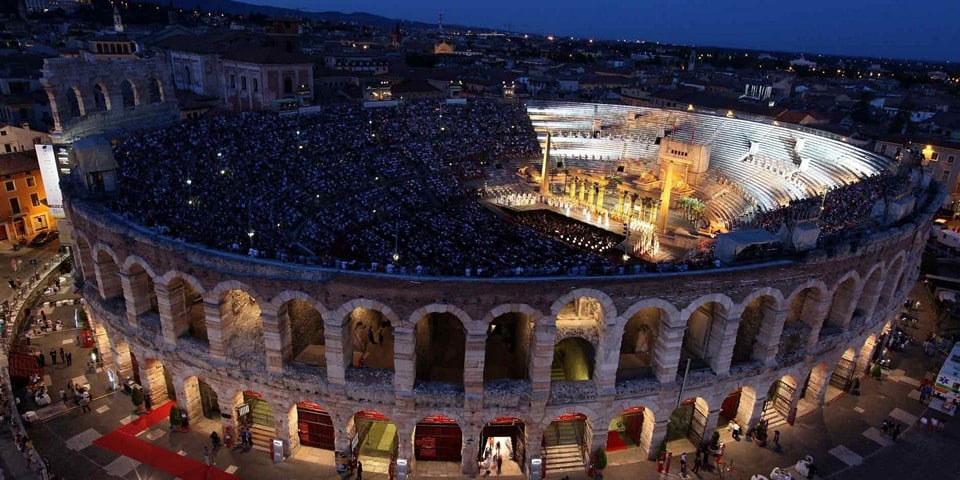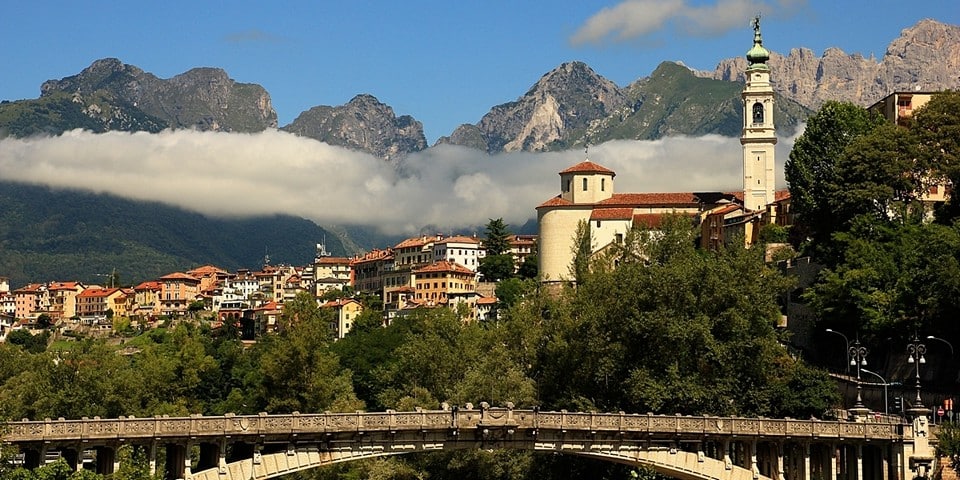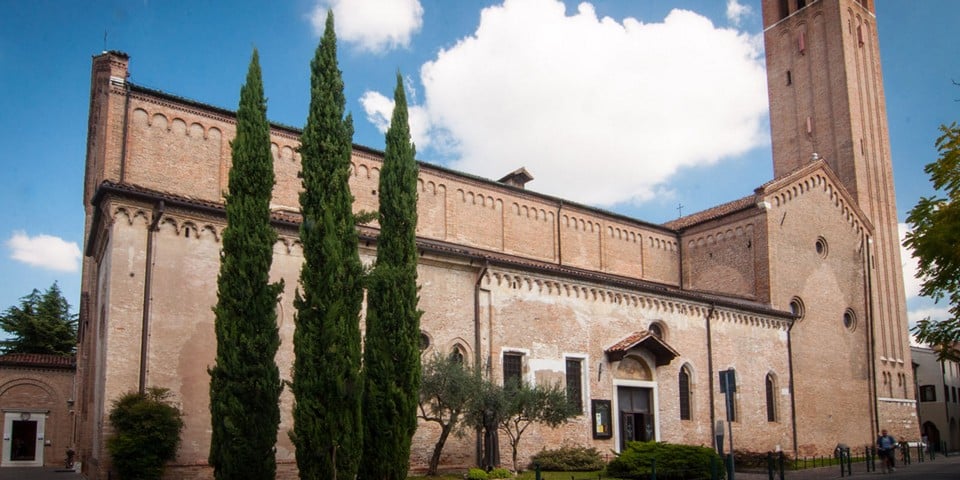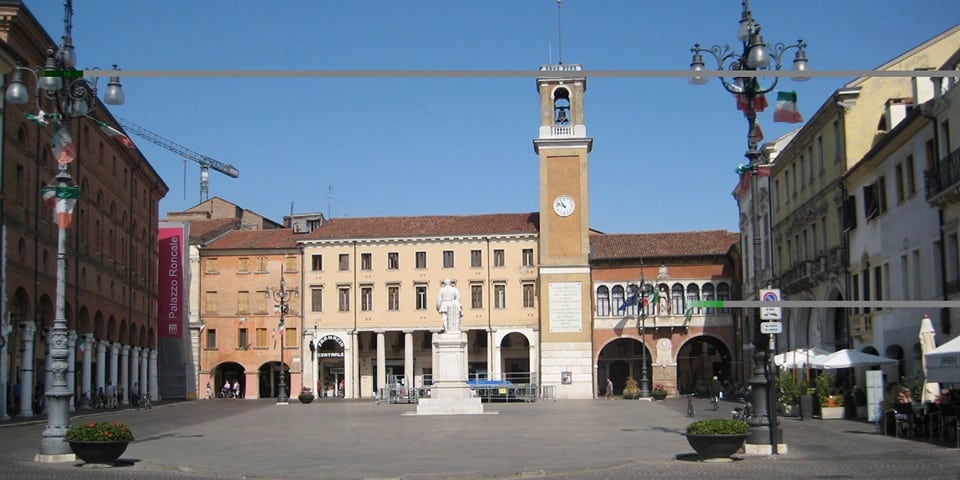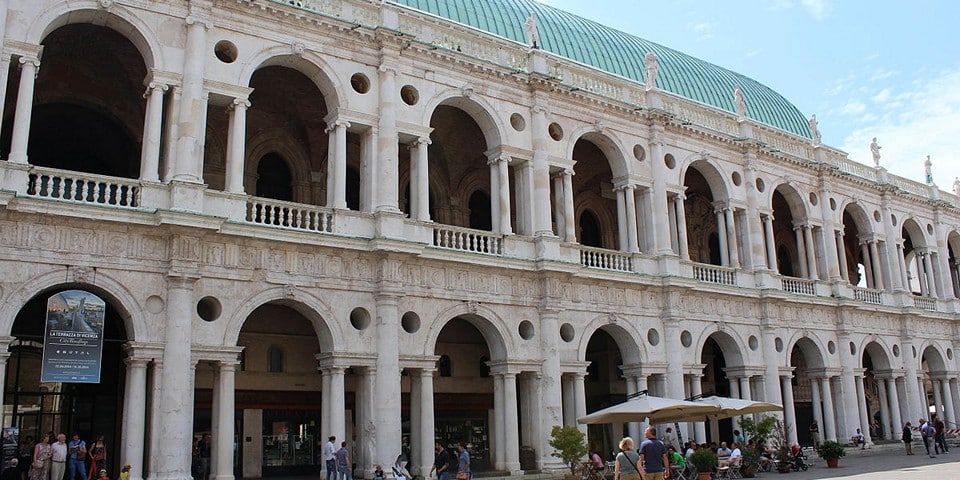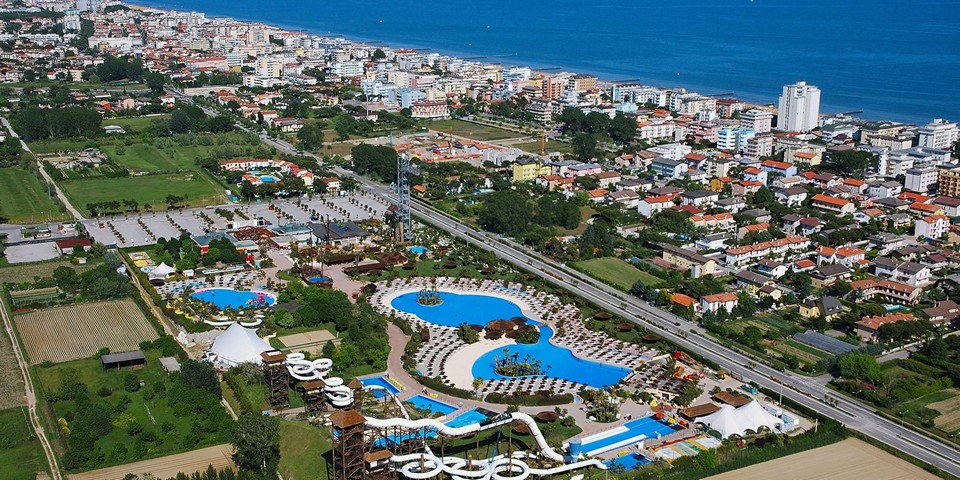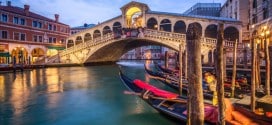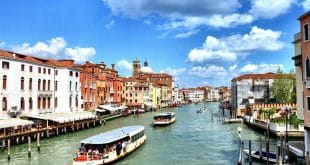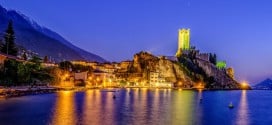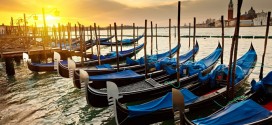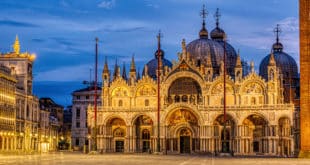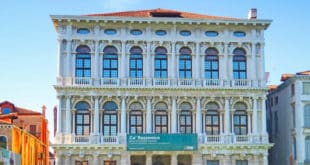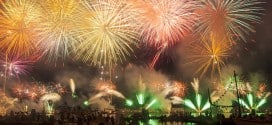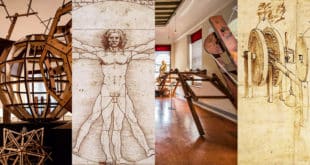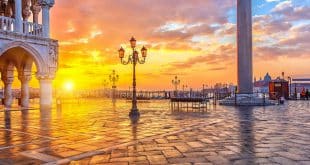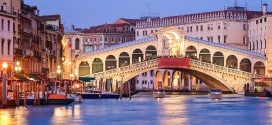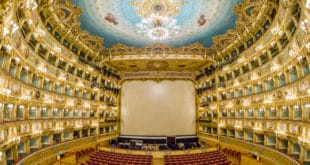Veneto
Veneto is one of the most visited regions in Italy. Its capital, Venice, is often called the most romantic city in Europe, and it was in Verona that Romeo and Juliet met and fell in love.
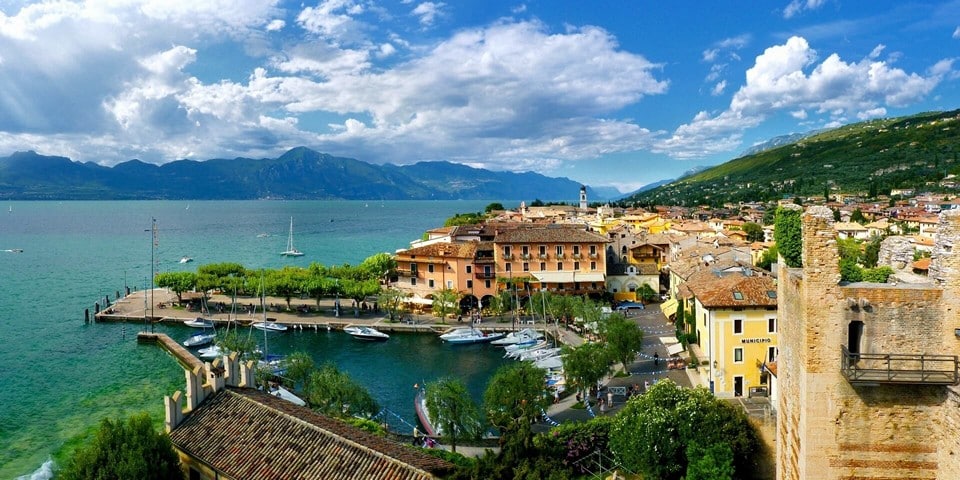
Page Contents
Things to Know Before Visit Veneto
What is Veneto known for?
Veneto what to do?
Veneto what to see?
Interesting Facts about Veneto
- Veneto, located in northeastern Italy, has a rich history dating back to the Roman Empire, with evidence of settlements from around 1000 BCE.
- The region is renowned for Venice, its capital city built on a lagoon, which emerged as a major maritime power during the Middle Ages.
- Veneto is home to the iconic Venetian Gothic architecture, exemplified by the stunning Doge’s Palace, built in the 14th century.
- In the 16th century, the region flourished under the rule of the Venetian Republic, one of the longest-lasting republics in history, lasting from 697 to 1797.
- Today, Veneto attracts visitors with its world-famous Carnival of Venice, held annually before Lent, offering a unique and mesmerizing experience.
Geography of Veneto
Veneto is situated between the Adriatic Sea and the Alps in northeastern Italy. The region’s capital is Venice, located approximately 525 km from Rome. Around 5 million people live in Veneto, which covers an area of 18.4 thousand square kilometers. The primary language is Italian, but German and various dialects, such as Venetian, Ladin, Friulian, and Cimbrian, are also spoken.
Veneto is divided into seven provinces:
- Venice (Provincia di Venezia) – occupies 2/3 of the Adriatic coast in the southeast;
- Belluno (Provincia di Belluno) – located in the northern part of the region, bordering Austria;
- Treviso (Provincia di Treviso) – situated in the eastern part of the region, between the provinces of Venice and Belluno;
- Rovigo (Provincia di Rovigo) – in the southern part of the region, extending to 1/3 of the region’s coastline along the Adriatic Sea;
- Padua (Provincia di Padova) – located slightly south of the region’s center, including a small section of the Venetian Lagoon (Laguna Veneta) along the Adriatic coast;
- Vicenza (Provincia di Vicenza) – in the northeast of the region, bordering Padua, Treviso, Belluno, and Verona;
- Verona (Provincia di Verona) – the westernmost province of Veneto, bordered by Rovigo, Padua, and Vicenza.
The waters of the Adriatic Sea wash the southeastern part of Veneto, and its northeastern border meets Austria. The region shares its northern border with the Trentino-Alto Adige region, and to the south, it is bordered by Emilia-Romagna. To the east, Veneto is adjacent to the administrative region of Friuli-Venezia Giulia, and to the west, it shares a border with Lombardy.
The plains cover 57% of the region and are in the south. Mountains (29%) and hills (14%) are concentrated in the northern part of the region. Five major rivers flow through the lands of Veneto, with the largest being the Po River, stretching 652 km in length. It originates in the mountains of northwestern Italy and flows eastward through Piedmont, Lombardy, and Venice before emptying into the Adriatic Sea, forming a marshy delta.
In addition to the Po River, other significant rivers include the Adige (Adige), Tagliamento (Taljamento), Brenta (Brenta), and Piave (Pjave), all of which originate in the mountains and flow into the Adriatic Sea.
History of Veneto
The history of Veneto can be divided into several periods. The first relates to the Veneti people’s settlement and alliance with the Romans. The second period includes the region’s conquest by barbarians and the establishment of the authority of the Holy Roman Empire, founded by the German ruler Otto the Great. The third period marks the flourishing era of the Venetian Republic, and the fourth period corresponds to modern-day Venice.
The Veneti and Roman Period
The earliest settlers arrived in Veneto during the Neolithic period, as evidenced by archaeological excavations. In the 12th century BC, the Veneti arrived and soon engaged in trade with the Etruscans, who inhabited the northwest of the Apennine Peninsula, and the Greeks settled on the eastern coast. In the 3rd century BC, the Romans arrived in the region, and the Veneti allied with them against the Gauls, their perennial enemies. They also fought on the side of Rome during the Second Punic War (218-202 BC).
In 181 BC, 3,000 Roman colonists arrived in Veneto and founded a well-fortified colony named Aquileia, which served as a key point to the east of Italy. The Romans paid special attention to building roads, and connecting Aquileia with distant regions of the Republic.
In 91 BC, the Veneti were granted Roman citizenship. Rome made this concession due to numerous revolts by Italian tribes dissatisfied with their unequal status in relation to the Romans. Over the next hundred years, Latin replaced the Veneti language, and the local inhabitants assimilated Roman culture.
Under the Rule of Barbarians
Starting from the 2nd century AD, barbarian invasions on Veneti lands became more frequent. In 452 AD, the Huns under the command of Attila completely destroyed Aquileia. Local residents dispersed along the coast, and Venice was founded.
In the mid-6th century, Byzantium drove out the barbarians from Veneto, and the region became part of the Exarchate of Ravenna. However, Byzantine rule did not last long, and in 596 AD, Germanic tribes invaded the Apennine Peninsula. Military actions lasted for almost a century, and in 643 AD, the Lombards managed to expel the Byzantines from the city residence of Oderzo, subsequently occupying almost all of Veneto except Venice. This was followed by a long period of wars.
Stability came in 962 AD when the region became part of the Holy Roman Empire, founded by East Frankish King Otto the Great. A peaceful period lasted for two centuries until Emperor Frederick Barbarossa came to power and sought to strengthen his rule over Italian lands by force. He appointed his vicars, imposed heavy taxes, and stationed troops. In 1167 AD, major cities in Veneto united in the Lombard League and rebelled against him.
In 1176 AD, the Lombards defeated the emperor’s forces, and many cities in northern Italy joined the League, bolstering its position. As a result, Frederick Barbarossa’s authority in Italy weakened, and Italian cities began to prosper. The Lombard League disintegrated only after the emperor’s death when the need for its existence diminished.
Period of Flourishing
In the 12th century, the main city of Veneto became Venice, located on the coast of the Adriatic Sea. Unlike other cities in the region, Venice’s time under the Holy Roman Empire was short-lived, and from 812 AD, it came under the authority of Byzantium. Venice fought alongside Byzantium in southern Italy against the Saracens and Normans. This allowed Venice to strengthen its position significantly, annexing numerous islands and cities on the Apennine Peninsula and controlling various trade routes. Although enjoying full independence and dominating the Adriatic Sea, Venice remained formally subject to the Byzantine Empire.
Gradually, many territories came under the rule of the Venetian Republic (Serenissima Repubblica di Venezia). It held lands in Veneto, Lombardy, Romagna, Crete, Cyprus, the Peloponnese, and others. Venice engaged in prolonged wars with the Republic of Genoa (Serenissima Repubblica di Genova), finally breaking its resistance in 1381.
In the 16th century, the Venetian Republic reached its peak. The society valued scientific and artistic education, and actively engaged in trade, and the combination of low taxes and a lenient rule allowed Venetians to prosper. Nevertheless, the era of the Venetian Republic was coming to an end.
Modern History
The discovery of maritime routes to America and India played a significant role in the decline of Venice. Furthermore, when Napoleon Bonaparte rose to power in France at the end of the 18th century and conquered Italian lands, the Venetian Republic lost its independence. The territory of Veneto once again became part of the Holy Roman Empire. However, this status did not last long as the empire collapsed in 1806.
Following Napoleon’s downfall, the lands of Veneto came under the control of the Austrian Empire (L’Impero austriaco) and remained so even after the formation of the united Italian Kingdom in 1861. Five years later, a war erupted between Prussia and Austria, leading to the collapse of the Austrian Empire. According to a peace treaty, Veneto was ceded to Italy, where it remains part of to this day.
Tourism in Veneto
Veneto is one of the most developed Italian regions, and tourism plays a significant role here. Unique attractions and historical, cultural, and culinary traditions attract over 60 million tourists annually.
Venice
Venice is the only city in the world located on 118 islands, separated by around one and a half hundred narrow canals. This makes water trams a common sight here, and boats serve as bicycles. Only a small part of the city is on the mainland.
Luxurious ancient buildings in Venice stand closely together. The most prestigious area is Piazza San Marco, where tall columns brought from Constantinople are installed. On one stands the winged lion, the symbol of Venezia, and on the other stands Saint Theodore, the city’s first patron.
On the square, you can also find:
- The Cathedral of San Marco (Basilica di San Marco), built in 829 AD in the Byzantine style. It houses the relics of Saint Mark.
- The Clock Tower (Torre dell’Orologio), not only tells the time but also shows the moon’s phase and zodiac sign.
- The Doge’s Palace (Palazzo Ducale), served as both the government and a prison. Some lucky individuals managed to escape, including Casanova, who made a hole in the palace’s roof to flee the prison.
- The Bell Tower (Campanile di San Marco), stands at a height of 99 meters.
- The Library of San Marco is where 13,000 ancient manuscripts are kept.
Venice boasts a vast number of magnificent palaces, temples, and museums. During excursions to the glass factory, tourists can witness the making of the famous Venetian glass.
In February, tourists from all over Europe gather in the city to attend the Venetian Carnival.
Padua
Padua is located in the east of the Padan Plain (Val Padana), 20 km from the Venetian Lagoon. The city has many churches. The city’s main temple is the Cathedral (Duomo di Padova), the construction of which Michelangelo participated.
Also worth visiting is the Basilica of Saint Anthony of Padua (Basilica di Sant Antonio), which is under the jurisdiction of the Vatican and is one of the most powerful churches in Italy.
Of special importance to Catholics is the Basilica of Saint Justina (Basilica di Santa Giustina), where, according to legend, the relics of Saint Luke and several other Christian saints are located. The frescoes in the Scrovegni Chapel (Cappella degli Scrovegni) were painted by one of the best medieval artists, Giotto di Bondone.
Read about: The Sights of Padua
Exploring the local streets is fascinating; Padua has many ancient buildings and palaces. One of Italy’s oldest universities, founded in 1222, is located here. Padua is also interesting for literature enthusiasts, as Shakespeare’s comedy “The Taming of the Shrew” is set here.
Verona
Verona is the city where Romeo and Juliet met and fell in love. Shakespeare’s fictional story brought world fame to this small provincial town, and the residents fully capitalized on it.
Surprisingly, the houses of Juliet and Romeo do exist. However, tourists can only visit the building where the heroine lived and her tomb (Tomba di Giulietta).
Inside Juliet’s house (Casa di Giulietta), the interior of the 14th century has been recreated, and a statue of Juliet has been installed. However, visiting Romeo’s house is not possible as it is privately owned. Despite the municipality’s efforts to persuade the owners to sell the building to the city, it was unsuccessful.
Verona has many other attractions not related to the legendary love story. Within the Ancient City (Città Antica), the Roman Amphitheater (Arena di Verona) can accommodate 30,000 spectators. Here, as in ancient times, various theatrical performances take place, and the best opera singers and artists worldwide come to perform on the millennium-old stage in Verona.
Additionally, Verona has a fortress reminiscent of the Kremlin – Castelvecchio Castle (Castelvecchio). It played a crucial role in the city’s defense system for centuries. The fortress walls, stone bridges, towers, numerous palaces, and temples captivate curious tourists.
Belluno
The city of Belluno got its name from the Celts: “belo-dunum” means “Magnificent Hill.” It is the northernmost administrative center of the Veneto region, located at the “entrance” to the Dolomite Alps. This is why Belluno is a center for both winter and summer tourism with well-developed infrastructure.
In the old part of the city, there are many medieval churches, and the main cathedral is the Cathedral of St. Martin (La Basilica Cattedrale di San Martino). The Church of St. Peter (Chiesa di San Pietro) is decorated in the Baroque style and houses works by Sebastiano Ricci, Giorgio Schiavone, and Andrea Brustolon.
Belluno boasts many Gothic streets, houses, and Renaissance palaces. Several ancient gates are well-preserved, and by passing through them, one can reach the 67-meter bell tower from the 18th century. On Piazza Duomo, there is the San Gioatà Fountain, which was installed in 1411. At its top is a copy of a statue, the original of which can be found in a nearby museum.
Treviso
Treviso is a city located 30 km north of Venice. Its medieval walls with loopholes, tall towers, and fortresses speak of its former strategic defensive importance.
The city boasts numerous religious landmarks. The main cathedral is the Cathedral of St. Peter (La Cattedrale di San Pietro Apostolo), which houses an altar painted by Titian (Tiziano). The Church of St. Nicholas (La Chiesa di San Nicolò) is renowned for frescoes by Tommaso da Modena (Tommaso da Modena). In the Church of San Francesco (Chiesa di San Francesco), the son of Dante Alighieri and the daughter of Francesco Petrarch are buried.
Treviso is sometimes called “Little Venice” due to several canals branching off from the Botteniga River. The most picturesque is the canale dei Buranelli, flowing through the historic center.
Rovigo
Rovigo became part of Veneto in 1482. Before that, the city belonged to the province of Ferrara. Rovigo is known for its art gallery within the Academy of Concordi (Accademia dei Concordi). The official art gallery was opened in the 19th century after wealthy aristocrats donated or bequeathed their paintings to the academy. The collection now includes over four hundred works of various themes and styles.
In Rovigo, you can also explore other attractions, such as medieval churches and Renaissance-style palaces. Several city gates from ancient times have been preserved, along with the country’s tallest brick tower, the Torre Donà, standing at 66 meters.
Vicenza
Vicenza is an important industrial center in the country, exporting machinery, textiles, and jewelry. Presumably founded between the 11th and 7th centuries BCE, the city boasts numerous historical monuments.
The Basilica of Saints Felice and Fortunato (La Basilica dei Santi Felice e Fortunato) is believed to have originated in the 4th or 5th century CE. Its current appearance dates back to the 12th and 20th centuries. Another significant religious site is the Cathedral of Santa Maria Annunciata (Cattedrale di Santa Maria Annunciata). The Church of Santa Corona (Chiesa di Santa Corona), built in the 13th century, is also an important religious landmark.
Among secular buildings, the Palladian Basilica (Basilica Palladiana) stands out. Designed by architect Andrea Palladio in the 16th century, it is an impressive public building used for exhibitions and various events. The structure, made of white stone, is characterized by numerous loggias.
Andrea Palladio also designed another fascinating building, the Olympic Theater (Teatro Olimpico), opened in 1585. The theater is still in operation and has preserved its original appearance over the years. To prevent damage to the building, the management decided not to install heating or air conditioning, and the hall can accommodate no more than 400 spectators.
Resorts in Veneto
Veneto is home to numerous resorts due to its favorable geographical location. To the south, the region is washed by the waters of the Adriatic Sea, while to the north, hills and mountains dominate the landscape. Lake Garda (Lago di Garda), the largest lake in the country, lies to the west. These natural conditions have led to the development of large thermal resorts, four of which are considered the best in Europe. Among them are:
- Terme di Abano e Montegrotto – specializing in balneotherapy and mud treatments, located 14 km from Padua;
- Battaglia Terme – specializing in urogenital system treatments, located 15 km from Padua;
- Galzignano Terme – specializing in musculoskeletal and skin conditions, located 24 km from Padua;
- Recoaro Terme – specializing in the treatment of cystitis, chronic pyelonephritis, and upper respiratory tract diseases, located 42 km from Vicenza.
Among the coastal resorts, Lido di Jesolo and Caorle, located near Venice, are popular. For skiing enthusiasts, Cortina d’Ampezzo in Belluno, the capital of the 1956 Winter Olympics, is a prominent choice. Other excellent ski resorts include Civetta, Falcade, and Passo San Pellegrino.
Lake Garda offers year-round recreation opportunities. Windsurfing, parasailing, the thermal source Fonte Boiola, castles, villas, palaces, and beaches ensure an exciting experience for visitors.
Climate and Winemaking
The climate in Veneto varies depending on the region. In the south, it’s Mediterranean, while in the mountains, it’s Alpine. Lake Garda enjoys mild climatic conditions, whereas the Alps often experience cold winters with heavy snowfall. The mountains are warm, without stifling heat, and nights are cool in summer.
The favorable climate allows Veneto to cultivate high-quality grapes. Notable wines produced here include:
- Amarone della Valpolicella (Verona)
- Bagnoli Friularo or Friularo di Bagnoli (Padua)
- Bardolino Superiore (Verona)
- Colli Asolani-Prosecco or Asolo-Prosecco (Treviso)
- Conegliano Valdobbiadene (Treviso)
Most of Veneto’s wines are light and refreshing, but some have a tart and acidic taste, lacking fruity aromas. To avoid disappointment, it’s best to prefer wines from leading producers.
How to Get in Veneto
Near Venice, there’s a major international airport named after Marco Polo (Aeroporto di Venezia Marco Polo). Flights arrive here from many cities worldwide. At a distance of 31 km from Venice, there’s the Treviso Airport (L’aeroporto “Antonio Canova” di Treviso-Sant’Angelo), serving budget regional and international airlines. Convenient train and bus connections are available from here to Venice.
Another option to reach the regional capital is by sea. Venice’s lagoon has numerous ports connecting it to coastal cities in Italy, Greece, Croatia, and others. The Venice Passenger Terminal (Venezia Terminal Passeggeri) is between Piazzale Roma and the Tronchetto island. It serves cruise ships, ferries, and water taxis.
From Venice, you can take a train or bus to any town in the region and major cities in Italy. The journey to Padua takes 50 minutes, to Vicenza 60 minutes, and to Verona around 2 hours by rail.
 Italy for me From Italy with love
Italy for me From Italy with love


